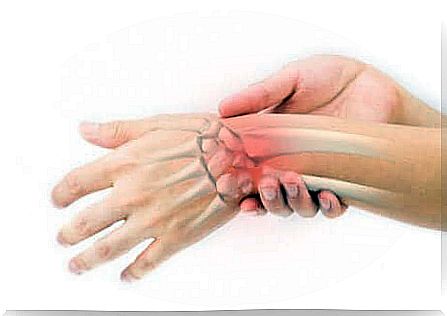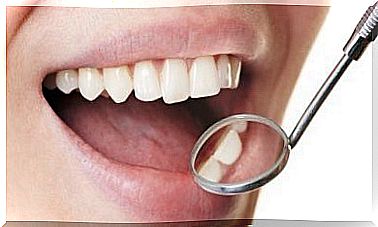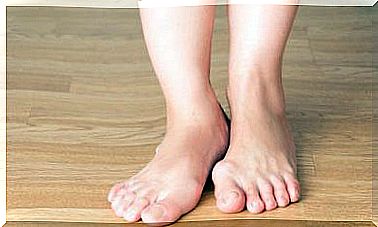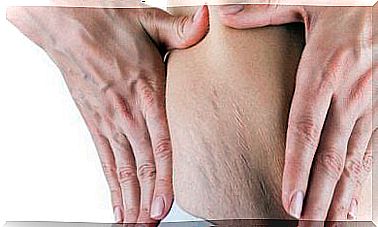What Does Vitamin D Give Us?
Did you know that vitamin D is also known as the antirachitic or the sunshine vitamin? However, you should know that it is not only involved in the formation of bones. Today, let’s discover its other functions and how to avoid its deficiency.

Vitamin D brings many benefits to the body. It also acts like a hormone. This is why it activates a large number of very important functions in the human body. Unlike other vitamins, it can be synthesized endogenously.
Vitamin D receptors are found in over 50 different tissues and are involved in the regulation of over 200 genes. This therefore makes it an essential vitamin for maintaining health. It is also made up of a set of liposoluble compounds and we can find it in the form of ergocalciferol (D2) and cholecalciferol (D3).
The functions of vitamin D and its role in health
According to the information published in the International Journal for Vitamin and Nutrition Research , the most important functions of this vitamin are as follows:
- Helps maintain the balance of calcium and phosphorus.
- Facilitates the intestinal absorption of calcium.
- Intervenes in cell development.
- Powerful modulator of the immune system.
- Participates in the transmission of nerve impulses to the muscle.
There is no doubt about the link between vitamin D and bone health. Severe deficiency can manifest as rickets in children or osteomalacia in adults.
Even if these conditions are not usual in our societies today, it should still be stressed that the presence of osteoporosis is important. Adequate levels of vitamin D can prevent the onset of this disease, which weakens bones and increases the risk of fractures.
Nevertheless, in recent years, researchers have accumulated more and more scientific evidence on its role in other aspects of health.
We now know a little more about its possible involvement in the development of autoimmune diseases (lupus, rheumatoid arthritis or multiple sclerosis), high blood pressure, cardiovascular disease and certain types of cancer. This is what a study published in the journal Acta Medica Portuguesa claims .

Vitamin D deficiency
The lack of vitamin D is already a global health problem. Due to the very important role that this vitamin plays in the body, we cannot underestimate the consequences of this situation.
The main cause of this deficiency is undoubtedly the lack of sun exposure. As we will see a little later, this is the main route for obtaining vitamin D. There are certain conditions that can increase the risk of developing a deficiency:
- Bowel problems that make it difficult to absorb, such as those that can occur with Crohn’s disease or celiac disease.
- Kidney or liver problems. The body needs to convert vitamin D into an active form, and for this proper functioning of these organs is necessary.
- Age.
- Some drugs reduce its absorption.
- Low solar exposure.
- People with dark skin.
- People with obesity.
Main sources of this vitamin
To take advantage of the benefits it brings us, it is important to know the sources that allow it to be obtained in adequate quantities. There are two ways to get vitamin D: through food and through skin synthesis.
Vitamin D in food
Food sources are not numerous and some of these foods are rarely eaten (such as viscera or butter). The foods richest in this vitamin are:
- Fatty fish: herring, mackerel, sardines, tuna, salmon.
- Liver and other viscera, and also pâtés and foie gras.
- Fat cheese and butter.
- Eggs: Vitamin D is found in egg yolk.
- Mushrooms.
- Fortified Foods: Foods fortified with vitamins and minerals are increasingly common. In this case, we find certain milks, vegetable drinks, juices or breakfast cereals enriched with vitamin D.

Skin synthesis and solar radiation
It is the source that provides the most vitamin D to our body. Ultra-violet solar radiation stimulates the production of vitamin D3 in the epidermis. It is estimated, according to current scientific literature, that direct sun exposure of 5 to 15 minutes, on the face and arms, would be sufficient to prevent a deficiency.
However, there are several factors that complicate this synthesis:
- The older we get, the more we lose this ability to synthesize vitamin D.
- The darker the skin tone, the more sun exposure is needed.
- Protection factors greater than 8 interfere with the penetration of sunlight into the skin.
- The intensity of sunlight, which does not have the same impact in summer as in winter, nor in all countries or regions.
While regular sun exposure is necessary to achieve optimal vitamin D levels, we need to be aware of the risks involved. The most important are skin cancer and premature aging. It is therefore important to follow the advice of experts when exposing yourself to the sun.
Vitamin D, an essential nutrient
Vitamin D deficiency is detectable through a blood test. This is the best way to find out whether or not you need to take a supplement. Sunbathing as recommended and eating foods rich in vitamin D is the best way to prevent your deficiency.









